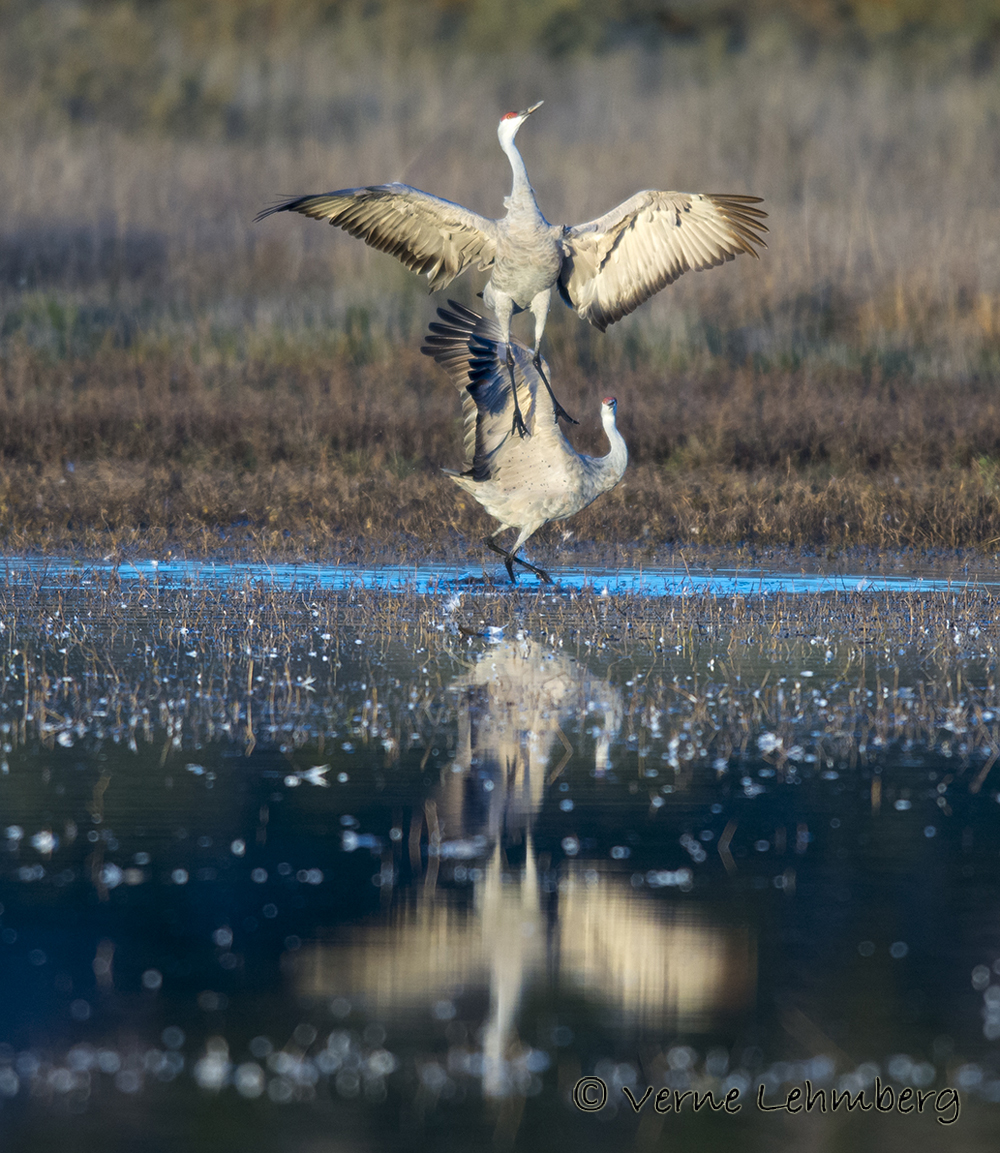
This is a story about a specific family of sandhill cranes in Yellowstone. Many parts of this story are representative of all sandhills as far as the type of habitat they require, what they eat, where they reproduce, and where they winter. But there are a few aspects unique to this family. It is a story that will be told over 3 days.
The lives of any species are circular so it rather arbitrary where I start this story. I will start in the spring when sandhills mate. There mating rituals can be flamboyant including dancing to solidify the pair bond. Mating sandhills sometimes begin pairing up and dancing on their winter range in late February or March.

The cranes leave their wintering grounds in February or March and this pair arrived in Yellowstone in April. They found one of the safest places for sandhill cranes to build a nest and lay 2 eggs, the island in the middle of Floating Island Lake on the road between Mammoth and Roosevelt.

Their hard work paid off. The eggs stayed warm and dry and two babies hatched, one on July 12th and one a day or two later.




As I said the sandhills nested on an island, a wonderful place to be protected from predators, but not a good place to find food. To do that they had to go to the land at the back of the lake, so every morning the parents flew to the land while the babies swam. The babies followed their parents around as they found morsels for them to eat. They found seeds, plant tubers, frogs, lizards, mice, earthworms, and insects. The babies thrived although the first one to hatch was noticeably larger than the other. One morning the smaller baby was found dead on the island. Because the baby wasn’t eaten it is most likely the larger, older baby killed its younger sibling. A fairly common event in the lives of cranes who normally only raise one baby to maturity.

The second part of the crane’s story will be posted tomorrow and will include something I have seen only one time in my 40 years in Yellowstone.
If you would like to see more photos of sandhill cranes, as well as read many stories about other Yellowstone animals, with lots of photos, go to www.yellowstonedaily.com.
Our photos are available at www.vernelehmberg.com where you will find over 4,000 photos from Africa to Yellowstone.






Great story. I never knew that baby sandhills swam. I always wondered how they got to dry ground. Thanks for sharing.
I’m with you B.W. I never saw them swim until I saw these guys. I was surprised, but it does make sense when you think about it.
With the others! Beautifully done. Different reading 2 before 1. Sad about the one baby. That seems rather common in the larger birds. Anxious for 3 now. Thank you for the beauty!
You are most welcome. It does seem common in the larger birds. I think some of the smaller ones do it too. We just don’t notice it as much.
Yes, what Dianna said. Sobering after reading the second one first, but touching. Wish that they still nested on the island because their new spot is too hard to see. That pair is tenacious though.
I figure some sandhills will nest there if the island doesn’t disappear. I don’t like that new spot at all.
Thank you so much Dianna!
Really beautifully done.